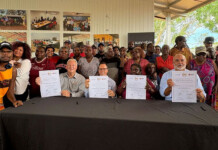Climate events including floods and heatwaves are likely to compound energy hardship for many Australians, a new report led by Monash University researchers has found.
The Household and home businesses research: Emerging lifestyles, preferences and practices report offers critical insights into how everyday household trends, practices and vulnerabilities will impact energy demand and the shift to renewable energy.
The report, based on research from the Scenarios for Future Living project led by researchers from Monash’s Emerging Technologies Research Lab, draws on a national survey of more than 5,000 Australians conducted between April and May 2025. Participants represented a cross section of age, gender, income and living situations across the country.
The survey explored how Australians’ living situations, routines and preferences are shaping current energy use and influencing future demand and the transition to renewable energy.
Related article: Hotter, harder future: Is this Australia’s climate wake-up call?
The research examined:
- Consumer energy resources—how income, home ownership and housing type affect access to solar panels, batteries and electric vehicles.
- Demand-side management and household routines—how people, including those working from home, use and manage energy in daily life.
- Future smart appliance automation and vehicle-to-grid technologies—how Australians view automation, control and smart energy systems.
- Hardship and access inequities—how people in climate risk areas experience growing energy hardship and limited access to cooling and clean energy.
Among other key insights, the findings showed 38% of respondents had difficulty paying their energy bills or meeting essential needs in the past year, rising to 54% among people living in self-reported climate-risk zones.
The study revealed that energy hardship is not only an economic issue but also a matter of health and safety. As climate risks increase, more households will likely struggle to cool homes during heatwaves, maintain clean air during bushfires, power medical devices and stay connected during outages.
Lead author of the research Dr Fareed Kaviani said climate pressures are magnifying existing inequalities in Australia’s energy system.
“Energy hardship is no longer just about affordability. It is about whether households can stay safe and well as extreme weather becomes more frequent,” Dr Kaviani said.
“Without targeted policies and support, the gap between those who can invest in clean technologies and those who cannot will only widen.”
The report also found that while Australians are increasingly open to smart technologies such as automated appliances and vehicle-to-grid systems, most still want to retain control over when and how these systems operate.
Related article: Energy retail report shows increase in energy hardship
This tension between automation and control is expected to become sharper as the climate changes. For example, while vehicle-to-grid technology promises to help stabilise the grid during extreme weather events like heatwaves, most electric vehicle households said they would prefer to take manual control of their appliances at those times.
The research showed that people’s willingness to join vehicle-to-grid programs depended on how much control they felt they had over their appliances and energy use.
Funded by the RACE for 2030 Cooperative Research Centre, the research provides evidence to guide industry and policymakers in building a fair and resilient energy system for the decade ahead.
The researchers plan to update and repeat the survey annually over the life of the project and welcome opportunities to collaborate with partners interested in expanding this important work.







